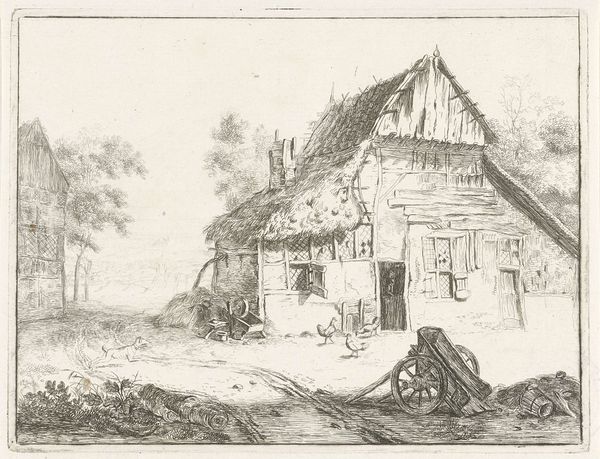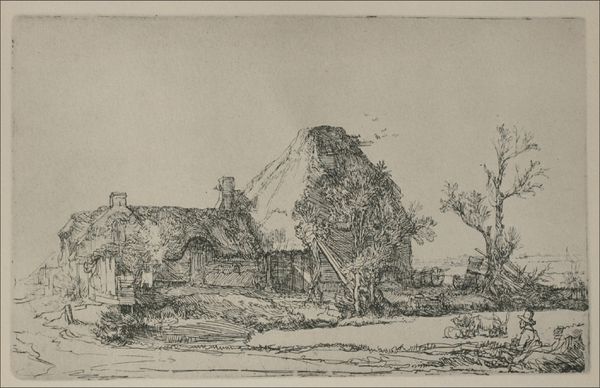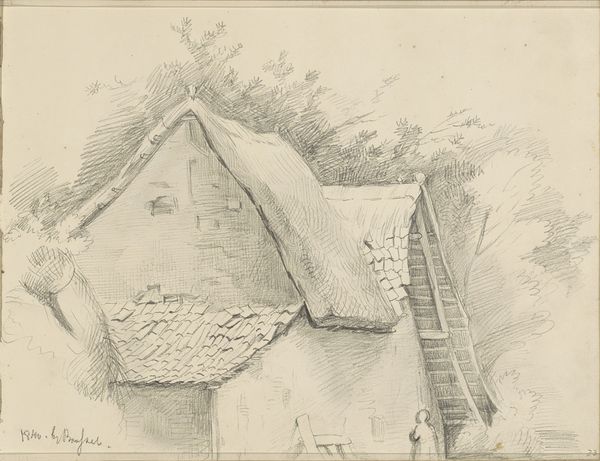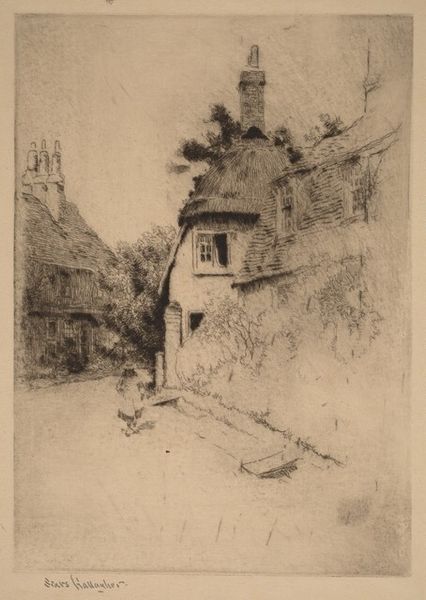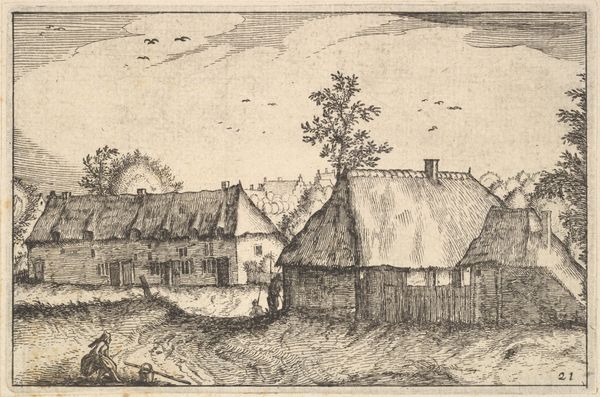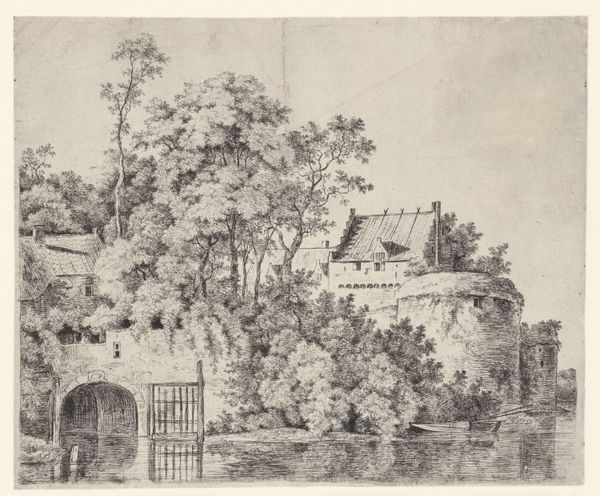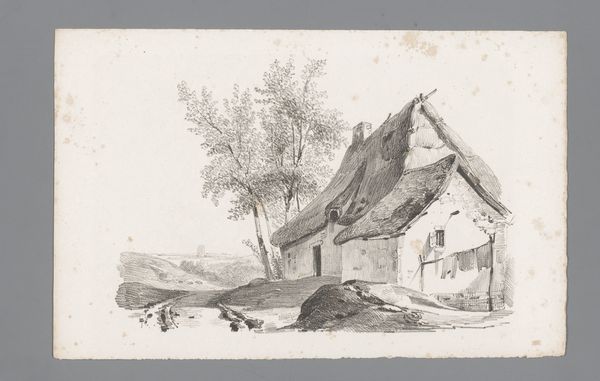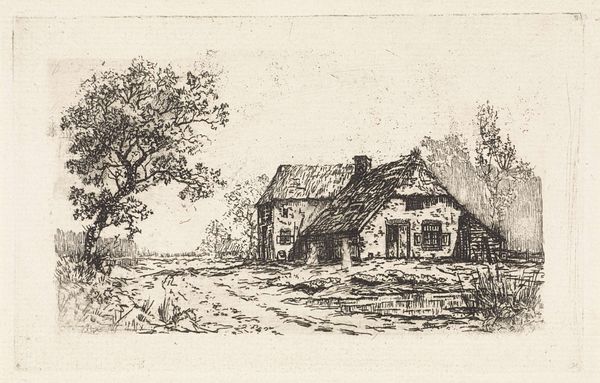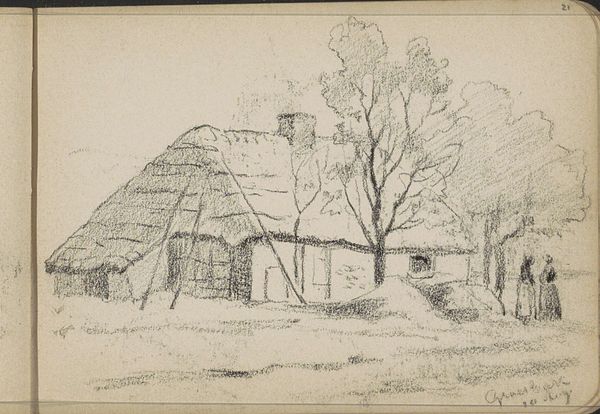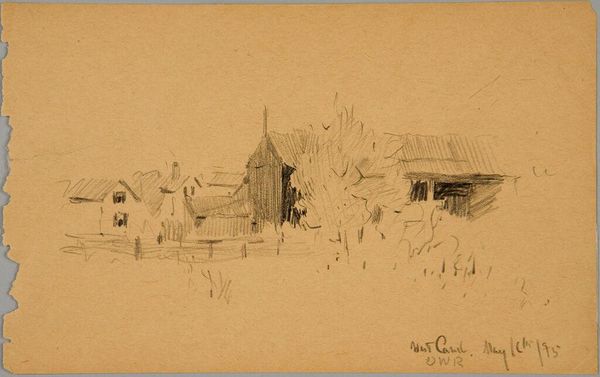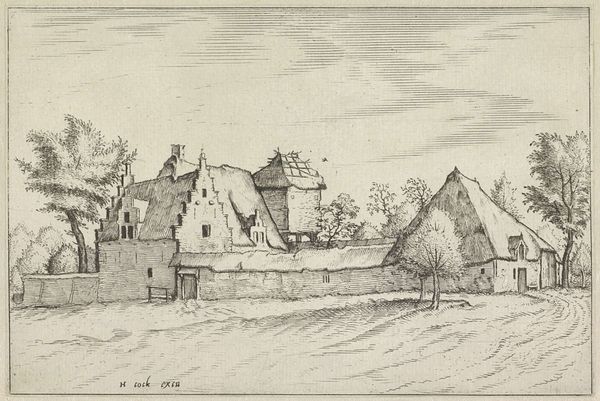
drawing, ink, pen
#
drawing
#
ink painting
#
pen sketch
#
pencil sketch
#
landscape
#
ink
#
pen
#
cityscape
#
realism
Dimensions: 9 9/16 x 12 7/8 in. (24.3 x 32.7 cm)
Copyright: Public Domain
Curator: Immediately, I am struck by its quiet intensity, that sort of peaceful slumber only a small village can evoke. Editor: This is Andrew Fisher Bunner’s 1876 pen and ink drawing, "Sketch of a German Village," now part of the Metropolitan Museum of Art's collection. Curator: The intricacy of the pen work, layering the strokes to build shadow and form, speaks to incredible skill and patience in the execution of craft. I see repeated use of hatching and cross-hatching. Editor: Absolutely. What is particularly fascinating is situating this intimate village scene within the rapidly industrializing late 19th century. It invites considerations about nostalgia, labor, and the rural-urban dynamic of that era, as well as questions of class and access to resources. Who has the time to create this when a photograph could offer the same information in minutes? Curator: But a photograph cannot communicate the hand of the artist, the individual interpretation! We see the buildings pressed close, almost protective of one another—reflecting the interconnected nature of small village life. Notice how the artist deliberately left portions unfinished. Editor: And what of German identity during this time? With the formation of a unified German state just five years prior, in 1871, we might see the focus on quaint village life as actively participating in solidifying notions of German cultural identity: a move towards romanticizing tradition in the face of modernization. Also, there is the absence of people and questions of gender within these traditionally built structures. Curator: An excellent point; even its absence contributes to the discussion. Consider the types of labor necessary to build a village, and where Bunner situated the value in this particular piece—within the labor *he* enacts to render it. He could have presented an imposing cityscape or new construction. Instead, he selected modest and worn structures, illustrating what he deems worthy of attention. Editor: I agree. It encourages us to consider our relationship to history, national identity, and the labor of artistic production. It really becomes a multilayered and engaging narrative. Curator: It provides a great jumping-off point for our visitors to delve deeper into that era and its complicated relationship with place and time.
Comments
No comments
Be the first to comment and join the conversation on the ultimate creative platform.

